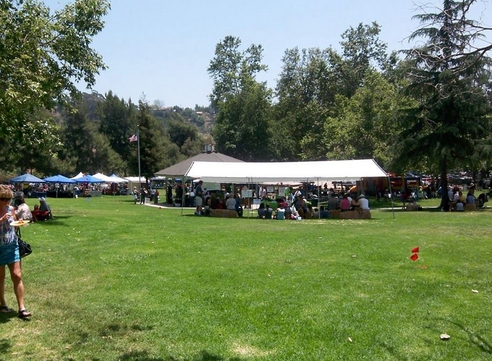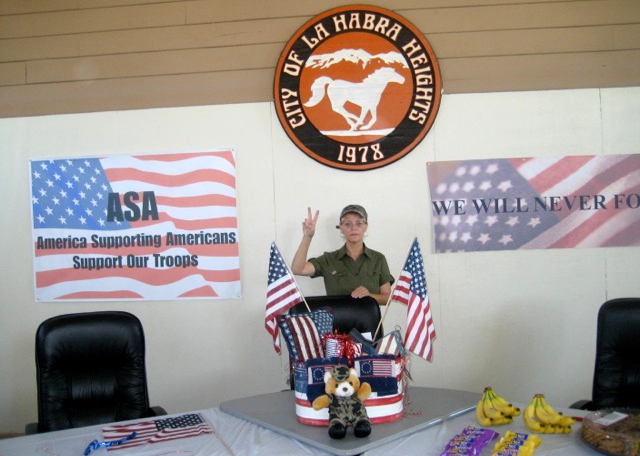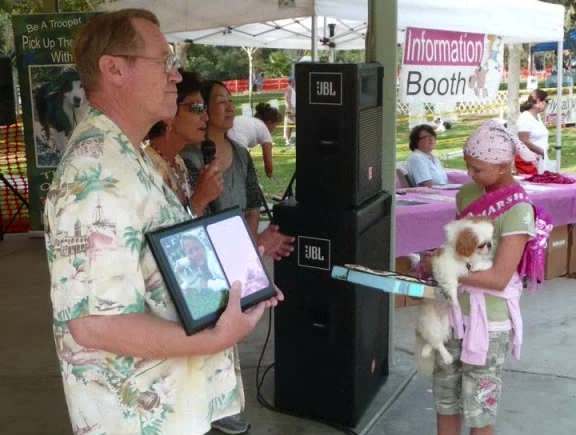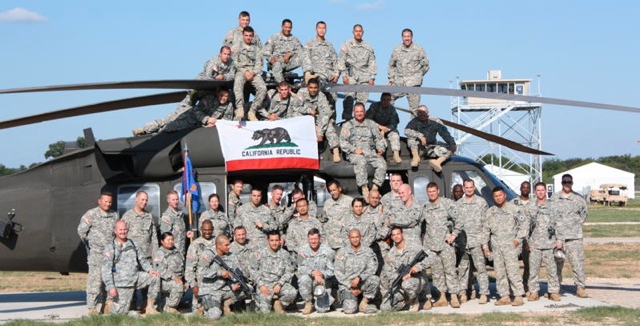 Karen Vipperman has been a Chair Person for La Habra Heights Avocado Festival.
Karen Vipperman has been a Chair Person for La Habra Heights Avocado Festival.
La Habra Heights Avocado Festival
1885 Hacienda Rd
La Habra Heights, CA 90631
https://www.facebook.com/lhhavofest
Google+
Each year in mid-May the city of La Habra Heights celebrates the Hass avocado at its Annual La Habra Heights Avocado Festival – an avocado-focused, agricultural and community festival held in mid-May every year. All commercial, fruit-bearing Hass avocado trees have been grown from grafted seedlings propagated from a single tree which was grown from a seed bought by Rudolph Hass in 1926 from A. R. Rideout of Whittier, California. In 1926, at his 1.5-acre grove at 430 West Road, La Habra Heights, California, Hass planted three seeds he had bought from Rideout, which yielded one strong seedling. When the tree began bearing odd, bumpy fruit, his children liked the taste. Hass patented the tree in 1935 (the first US patent on a tree). The mother tree stood for many years in front of a residence in La Habra Heights. The tree died when it was 76 years old and was cut down on September 11, 2002. Two plaques by the private residence at 426 West Road mark the spot where it grew.
Hass Avocado History
All commercial, fruit-bearing Hass avocado trees have been grown from grafted seedlings propagated from a single tree which was grown from a seed bought by Rudolph Hass in 1926 from A. R. Rideout of Whittier, California. At the time, Rideout was getting seeds from any source he could find, even restaurant food scraps. The subspecies of this seed is not known and may already have been cross-pollinated when Hass bought it.
In 1926, at his 1.5-acre grove at 430 West Road, La Habra Heights, California, Hass planted three seeds he had bought from Rideout, which yielded one strong seedling. After trying and failing at least twice to graft the seedling with branches from Fuerte avocado trees (the leading commercial cultivar at the time), Hass thought of cutting it down but a professional grafter named Caulkins told him the young tree was sound and strong, so he let it be. When the tree began bearing odd, bumpy fruit, his children liked the taste. As the tree’s yields grew bigger, Hass easily sold what his family didn’t eat to co-workers at the post office. The Hass avocado had one of its first commercial successes at the Model Grocery Store on Colorado Street in Pasadena, California, where chefs working for some of the town’s wealthy residents bought the new cultivar’s big, nutty-tasting fruit for $1 each, a very high price at the time (more than US$15.00 of inflation adjusted value by 2007).
Hass patented the tree in 1935 (the first US patent on a tree) and made a contract with Whittier nurseryman Harold Brokaw to grow and sell grafted seedlings propagated from its cuttings with Brokaw getting 75% of the proceeds. Brokaw then specialized in the Hass and often sold out of grafted seedlings since, unlike the Fuerte, Hass yields are year-round and also more plentiful, with bigger fruit, a longer shelf life and richer flavor owing to higher oil content. However, Hass made a profit of less than US$5,000 through the patent because cuttings from single trees sold by Brokaw were then propagated to graft whole orchards.
Rudolph Hass carried on as a postman throughout his life and died of a heart attack at Fallbrook Hospital in Fallbrook, California in 1952, the same year his patent expired and not long after he had established a new 80-acre (320,000 m2) orchard.
By the early 21st century the US avocado industry took in over $1 billion a year from the heavy-bearing, high quality Hass cultivar, which accounted for around 80% of all avocados grown worldwide.

 Karen Vipperman has been a Chair Person for La Habra Heights Avocado Festival.
Karen Vipperman has been a Chair Person for La Habra Heights Avocado Festival.

